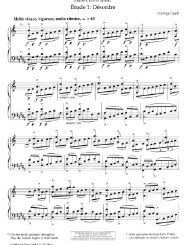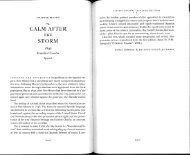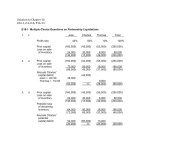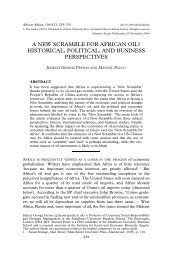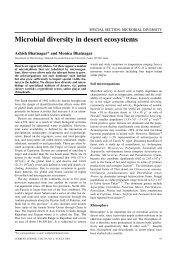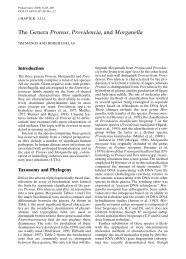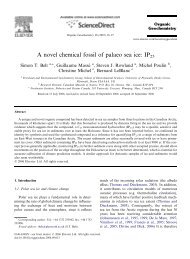Analysis by Key: Another Look at Modulation
Analysis by Key: Another Look at Modulation
Analysis by Key: Another Look at Modulation
You also want an ePaper? Increase the reach of your titles
YUMPU automatically turns print PDFs into web optimized ePapers that Google loves.
I ip "-4) <strong>at</strong><br />
i 5<br />
" Mdgd: V<br />
I @<br />
, cf. solo soprano C |<br />
ANALYSIS BY KEY<br />
Ex. 7 Haydn: Harmoniemesse,<br />
Kyrie, development<br />
<strong>Key</strong>s " (= F:l =c: W|| = g. 1< X V<br />
I<br />
,<br />
Form i exp dev.<br />
, i $ a<br />
(111') 1<br />
C"l Dl clc<br />
@> t :5tltl "g r<br />
.<br />
= BS :111' 1)<br />
Part of the difference between Rosen's approach and mine<br />
from<br />
probably<br />
the<br />
results<br />
differing perspectives of a historian dealing with common<br />
fe<strong>at</strong>ures of<br />
stylistic<br />
a large number of pieces, and a theorist examining fewer<br />
gre<strong>at</strong>er<br />
pieces in<br />
detail. If I encounter a number of development sections th<strong>at</strong><br />
or<br />
tonicize<br />
suggest<br />
VI<br />
th<strong>at</strong> they are going to do so, my interest is captured <strong>by</strong><br />
tonal<br />
the specific<br />
structures th<strong>at</strong> the composer cre<strong>at</strong>es: with Beethoven, for<br />
root of<br />
example,<br />
VI<br />
the<br />
might be an upper neighbour to V (Op. 10, No. 2, I), a passing<br />
between<br />
note<br />
the root and third of V (Op.7, I), even part of an<br />
down<br />
arpeggi<strong>at</strong>ion<br />
to<br />
from<br />
IV<br />
I<br />
(Op.79, I). 10 For me these functional differences are of<br />
importance,<br />
paramount<br />
but th<strong>at</strong> does not invalid<strong>at</strong>e the notion th<strong>at</strong> the common key<br />
forms a<br />
area<br />
stylistic link among these pieces. Sancho Panza and Jeeves<br />
different<br />
are very<br />
characters, but they belong to a common literary tradition.<br />
Interestingly enough, the specific structure found in the Haydn<br />
forms a<br />
Kyrie also<br />
stylistic link among many l<strong>at</strong>e classical development sections,<br />
course not as<br />
though of<br />
many as the toniciz<strong>at</strong>ion, confirmed or unfulfilled, of<br />
recent<br />
VI. In a<br />
article, David Beach has shown th<strong>at</strong> many of Mozart's<br />
show a<br />
developments<br />
downward arpeggi<strong>at</strong>ion from V to I through III; others<br />
a<br />
use III as part<br />
descending<br />
of<br />
motion within a prolonged V. 1l A sharing of the perspectives of<br />
MUSIC ANALYSIS 6: 3, 1987 297





